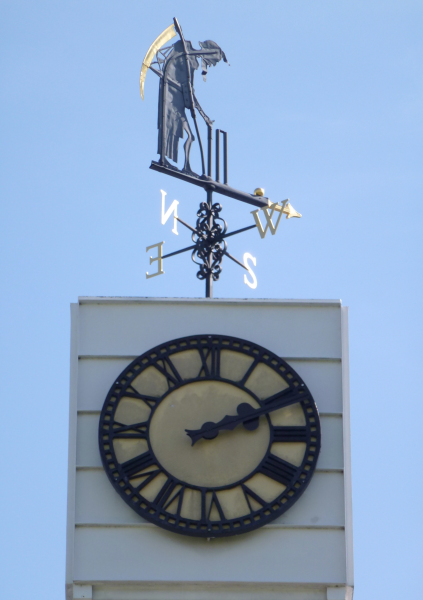Simˈpōzēəm
Nordic experience informs Solvency II LTG debate
Gideon Benari, Editor, Solvency II Wire
The debate on the treatment of long-term guarantee (LTG) products under Solvency II rages on. Regardless of the outcome of EIOPA’s impact assessment, questions will remain about how LTG products and investments (be they annuities, pensions and the like) should be evaluated and regulated in a market consistent regime.

The LTG Symposium published last year tackles some of the key concerns and theoretical arguments of the debate. The Nordic LTG Symposium builds on this important body of knowledge bringing the perspective of a region where market consistent valuation of the whole balance sheet and risk-based supervision, stalwarts of Solvency II, have been in place for some time. The Nordic LTG Symposium brings together perspectives from Denmark, Finland and Sweden, the three Nordic countries which are also members of the European Union (Norway and Iceland are not part of the European Union, although Iceland is currently applying for membership). The authors, all senior members of their respective national insurance associations, share some of the experiences surrounding the financial crisis and offer valuable lessons for Solvency II and the LTG debate.
Authors
The articles of the symposium are by no means a comprehensive account of each country’s experiences. Instead, each author chose to address areas which he or she view most relevant and instructive to the debate. In their own way, they each contribute towards building a better understanding of the challenges and advantages of implementing the Solvency II regime. Participants: Peter Skjødt, Executive Director, Economic Affairs department, Danish Insurance Association Esko Kivisaari, Deputy Managing Director, Finance Finland Ellen Bramness Arvidsson, Chief Economist, Insurance Sweden Gideon Benari, Editor, Solvency II Wire The articles will be published over the coming week.
A tradition of risk-based supervision
Risk-based supervision has a long history in the Nordic countries. Finland has by far the deepest rooted tradition dating back to the 1950s. Ideas developed by Teivo Pentikainen, were introduced in the ‘Solvency rules of the Insurance Company Act’ of 1952. These included a number of concepts now present in Solvency II, including the use of a principles based approach, applying different levels of interventions similar to the SCR and MCR thresholds, and the use of quantitative impact studies.
Market consistent valuation and the “traffic light” system
All three countries had introduced market consistent valuation of assets at different times during the 1990s, while liabilities continued to be valued on a historic cost basis and fixed discount rates. However, at the turn of the 21st century, the equities market collapse following the bursting of the dot com bubble, and the subsequent low interest rate environment triggered a step change towards market consistent valuation of the whole balance sheet. Denmark began using market consistent valuation of liabilities when the regulator introduced a “traffic light” system in 2001. This is essentially a simple early warning mechanism for measuring the potential impact of market scenarios on own funds. Significantly it allows for substantial drops in capital levels without triggering an asset sell off, instead paving the way for early discussions with the regulator before problems escalate. A version of the traffic light was also adopted in Sweden when market consistent valuation of liabilities was introduced in 2006. Finland underwent a similar transition around the same period, albeit without a traffic light system.
Test bed for some of the principles of Solvency II
The experiences in the Nordics have in many ways acted as a test bed for some of the issues currently plaguing the Solvency II adjustment to market consistent valuation as expressed primarily in the LTG measures. In Denmark, for example, the resilience of certain counter-cyclical premiums were put to the test in periods of stress. These have shown the importance of flexibility in setting and activating a counter-cyclical premium (CCP), but also demonstrated how it can work effectively. Another lesson, on the need for hedging when shifting to a market consistent valuation, was learned when the post crisis low interest rate environment left some low guarantee products exposed. In Sweden the move to market consistent valuation of both assets and liabilities improved incentives toward matching assets and liabilities. The previous regime when only assets were valued at real rates while liabilities were discounted at a fixed rate set by the regulator, created an incentive toward short term investing. The Finnish experience of the crisis showed the value of firms being well capitalised going into the crisis. Although it also highlights the need for flexibility during times of extreme market conditions.
Product change
Without exception, in all the countries featured in the symposium (where with-profits is the main LTG product line) the move to full market consistent valuation has led to changes in product range, and the almost inevitable demise of some higher rate fixed guarantee products. Market rate products in various forms (such as unit-linked and similar products) have come to dominate many of these markets. Notably in Finland, for the first time ever, in March 2013, unit-linked policies (measured by liabilities) represent more than half of all Finnish life insurance savings. Consequently the debate on the role of insurance and the transfer of risk to consumers is well advanced in the region.
Nordic idiosyncrasies
The Nordic LTG Symposium articles have also highlighted some interesting differences in market structures across the regions. Both in Denmark and Sweden, occupational pensions make up a significant portion of insurers’ life business. In Sweden all but 10% of this market is provided for by insurance firms. As a result, part of the move to market consistent valuation was driven by the IORP Directive (Sweden joined the EU in 1995; the IOPR Directive came into effect around 2006). In contrast, Finnish occupational pensions are managed by separate companies that cannot take part in the insurance market. Interestingly, close to a quarter of the market for LTG products is provided by non-life insurance firms, further blurring the borders between life and non-life firms in the LTG debate.
Answers and questions for the LTGA
The experiences of these Nordic countries are important and instructive to the current debate. They have shown some of the value of using the proposed measures currently under consideration in the EIOPA Long-Term Guarantees Impact Assessment (LTGA). The Nordic LTG Symposium will no doubt help to inform the discussion on the LTGA. But like all good discussions it should help illuminate those questions not yet fully explored. In particular, some concerns raised in last year’s LTG Symposium remain unresolved. The long-term impact of these measures and their macro-prudential effects must be understood to ensure a sustainable solution is found, which ensures a stable industry able to fulfil its vital role in the real economy and society as a whole. Link to Symposium index page]]>





